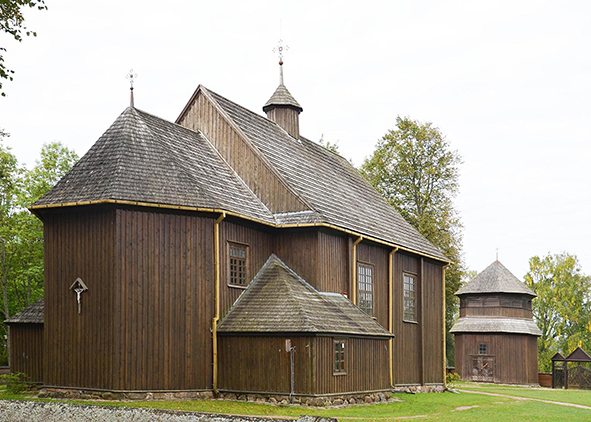Wooden Churches of Lithuania
DOI:
https://doi.org/10.19229/2464-9309/2172017Keywords:
wooden architecture, Lithuania, safeguardAbstract
Lithuania has a great variety of wooden architectures, among which the churches emerge for their quality and construction characters, prevailing the use of local materials. The strong link between architecture and the uncontaminated nature of places defines the identity of architectures, so that they sometimes appear almost like a large wooden sculpture, carved in a unique piece. The meticulous knowledge of the buildings has created an atlas of construction techniques, proposing itself as a tool for the conservation and preservation of refined building heritage; the atlas is divided according to themes as wood species, processing methods, construction phases, mutual relationship between the various technical units.
Downloads
Article Metrics Graph
References
Beazley, M. (1989), Il libro internazionale del legno, Libera Editore, Milano.
Berežanskytė, L. and Campisi, T. (2014), “La tradizione costruttiva degli edifici di culto in legno lituani tra XVIII e XIX secolo”, in Storia dell’edilizia delle opere pubbliche e delle infrastrutture – Quinto Convegno di Storia dell’ingegneria, Cuzzolin ed., Napoli, pp. 875-887.
Bertašiūtė, R. (2002), Forma ir konstrukcija lietuvių sodybos medinų trobelių architektūroje, Kaunas.
Butrimas, A. (2005), Lithuanian sacral architecture and art, Ed. VDAL Petro ofsetas, Vilnius.
Calame, F. and Bertašiūtė, R. (2004), European carpenters, workshop in Normandy, Editions a Die.
Campisi, T. and Berežanskytė, L. (2017), “Lithuanian wooden architecture Materials, ancient tools and constructive technologies for the safeguard of cultural heritage”, in Word Heritage and disasters – Knowledge, Culture and Representation, vol. 71, La Scuola di Pitagora srl, Napoli.
Jankevičienė, A. (1998), Lithuanian wooden churches chapels and belfry, Vilniaus dailės akademijos leidykla, Vilnius.
Kviklys, B. (1984), Churches of Lithuania, Lithuanian Library Press, Chicago.
Price, W. (2205), L’architettura del legno – Una storia mondiale, Bolis Ed., Bergamo.
Puodžiukienė, D. and Lukšionytė, N. (2014), Lietuvis arkitekturos istorija, Paveldas, Vilnius.
Tampone, G. and Semplici, M. (2006), Rescuing the Hidden European Wooden Churches Heritage, Free Books Ed., Città di Castello.

Downloads
Published
How to Cite
Issue
Section
License
This Journal is published under Creative Commons Attribution Licence 4.0 (CC-BY).
License scheme | Legal code
This License allows anyone to:
Share: copy and redistribute the material in any medium or format.
Adapt: remix, transform, and build upon the material for any purpose, even commercially.
Under the following terms
Attribution: Users must give appropriate credit, provide a link to the license, and indicate if changes were made; users may do so in any reasonable manner, but not in any way that suggests the licensor endorses them or their use.
No additional restrictions: Users may not apply legal terms or technological measures that legally restrict others from doing anything the license permits.
Notices
Users do not have to comply with the license for elements of the material in the public domain or where your use is permitted by an applicable exception or limitation.
No warranties are given. The license may not give users all of the permissions necessary for their intended use. For example, other rights such as publicity, privacy, or moral rights may limit how you use the material.


















































































